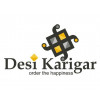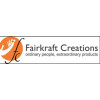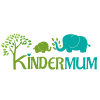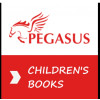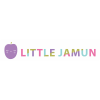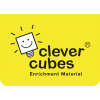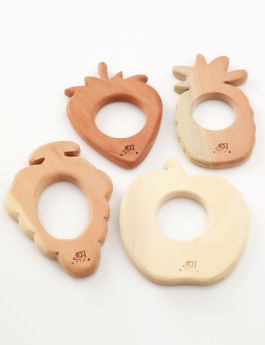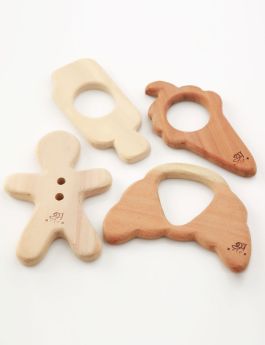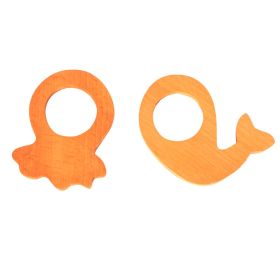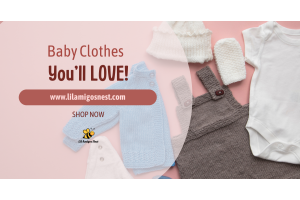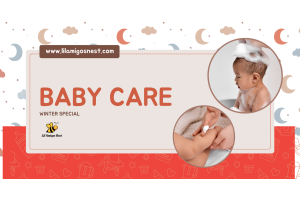Toy Safety Checklist Every Parent Must Know Before Buying

As parents, we want our children to be happy, entertained, and safe. Toys play a big role in childhood—they spark imagination, improve learning, and bring endless joy. But not all toys are created equal, and some can actually put children at risk. That’s why every parent should have a toy safety checklist in mind before buying.
In India, parents often ask, “How do I make sure I choose safe baby toys or safe toys for children?” With so many colorful options in stores and online, it can be confusing. From choking hazards to harmful materials, toys can bring hidden dangers. Knowing the right toy safety tips Indian families should follow is the first step toward ensuring kids' safety and creating a safe environment at home.
This blog will guide you through a complete checklist every parent should know before bringing toys into their house. Whether you are buying from a shop or scrolling through toys on India's online platforms, these tips will help you choose safe toys that encourage fun without compromising safety.
Why Toy Safety Matters
Toys aren’t just playthings; they are tools for learning, development, and creativity. However, unsafe toys can quickly turn fun into accidents. Small parts, sharp edges, poor-quality materials, or toxic chemicals can cause serious harm.
For parents, safety at home for kids starts with making the right choices when it comes to everyday objects—especially toys. The good news is that with awareness and the right checklist, you can easily avoid risky toys and ensure your child plays safely.
The Complete Toy Safety Checklist
Here’s a detailed guide to help you make confident, informed choices while shopping for toys.
1. Check the Age Recommendation
Every toy has an age label for a reason. Manufacturers design toys with specific age groups in mind, considering size, complexity, and safety risks. Always follow the recommended age range on the packaging.
- For infants and toddlers, avoid toys with small detachable parts that can cause choking.
- For older kids, toys with more complexity may be safe and stimulating.
When in doubt, choose safe baby toys that are simple, sturdy, and free from tiny pieces.
2. Inspect for Choking Hazards
Choking is one of the biggest risks for young children. Anything small enough to fit into a child’s mouth is dangerous.
- Avoid marbles, coins, beads, or small detachable parts for children under three.
- Perform the “toilet paper roll test”: if a toy part can fit inside the cardboard roll, it’s unsafe for toddlers.
Safe toys for children should always be too large to swallow and firmly attached.
3. Look for Non-Toxic Materials
Children naturally put toys in their mouths, so the materials used matter a lot. Always check if toys are made of non-toxic, BPA-free, and lead-free materials.
- Safe paints and finishes should not peel or chip easily.
- Plastic toys should be labeled BPA-free.
- Wooden toys should be smooth and free from splinters.
When shopping for toys in India, choose brands that highlight material safety.
4. Avoid Sharp Edges and Rough Surfaces
- Run your hand over the toy. If you feel any sharp edges, rough joints, or protruding wires, it’s not safe. Children can easily get scratches, cuts, or even deeper injuries.
- Opt for well-finished toys, with smooth edges and rounded corners.
5. Check the Strength and Durability
Kids play roughly, and weak toys can easily break into sharp or small pieces. Always test the durability of the toy:
- Pull gently at parts like wheels or handles.
- Press joints to check how sturdy they are.
- Avoid cheap toys that feel flimsy or fragile.
Strong, durable toys not only ensure kids' safety but also save you money in the long run.
6. Pay Attention to Strings and Cords
- Toys with long cords or strings can pose a strangulation hazard. For younger kids, avoid toys with cords longer than 12 inches.
- If you’re buying pull-along toys, make sure the string is short and firmly attached.
7. Choose Noise Levels Carefully
Loud toys can damage a child’s hearing if the sound is too high. Test electronic toys before purchasing. If it’s too loud for your ears, it’s definitely unsafe for your child.
8. Prefer Washable and Hygienic Toys
Children, especially babies, put toys in their mouths regularly. Washable toys are easier to keep clean and hygienic. Look for machine-washable soft toys and easily wipeable plastic or wooden toys.
9. Look for Certification and Standards
- In India, BIS (Bureau of Indian Standards) certification is one sign of safety. Globally recognized marks like CE or ASTM also signal safe manufacturing practices.
- When buying safe toys in India, look for these labels on the packaging to ensure you are choosing quality toys.
10. Avoid Counterfeit or Low-Quality Toys
- It’s tempting to go for cheaper options, but counterfeit or unbranded toys often skip safety checks. These toys may contain toxic materials, weak joints, or unsafe designs.
- Always buy from trusted toy stores or verified online sellers in India.
Extra Tips for Parents
Here are some additional steps you can take to keep playtime safe:
- Supervise playtime: Especially important for younger children.
- Store toys properly: Use boxes or shelves to avoid accidents at home.
- Regularly inspect toys: Discard broken or worn-out toys immediately.
- Teach safety habits: Explain to children why certain toys are unsafe.
Safe Toys by Age Group
Different ages have different needs. Here’s what parents should keep in mind:
Infants (0–12 months)
- Soft, colorful toys without small parts.
- Rattles, cloth books, and teething rings.
Toddlers (1–3 years)
- Large building blocks, sturdy ride-on toys, and simple puzzles.
- No small detachable pieces.
Preschoolers (3–5 years)
- Educational toys, pretend-play sets, and art supplies (non-toxic).
- Ensure paints and materials are safe.
Older children (5+)
- More complex toys, board games, and STEM kits.
- Still check durability and safe designs.
How Toy Safety Creates Peace of Mind
When you follow a checklist and buy only safe toys for children, you are not just avoiding accidents—you are building an environment of trust and comfort for your child. Children learn and grow best when parents aren’t worried about hazards during play.
By choosing safe baby toys and verified brands, you also encourage a culture of responsibility in the toy industry. Demand drives supply, so when parents insist on safe toys in India, manufacturers are encouraged to meet higher safety standards.
Frequently Asked Questions (FAQs)
Q1: How can I test if a toy is safe for my toddler?
Check size, materials, and durability. Use the toilet paper roll test to identify choking hazards.
Q2: Are wooden toys safer than plastic?
Not always. Wooden toys are safe if well finished and splinter-free. Plastic toys should be BPA-free and non-toxic.
Q3: What’s the biggest toy safety risk in India?
Choking hazards and unsafe materials from unbranded toys are the most common risks.
Q4: Should I allow electronic toys for my child?
Yes, if noise levels are safe and the toy is certified. Always supervise and check that batteries are secure.
Q5: How often should I inspect my child’s toys?
Regularly. Weekly inspections help catch loose parts or damage before they cause harm.
Toys should bring joy, not worry. By following this toy safety checklist, every parent in India can make confident choices for their children. From avoiding choking hazards to choosing non-toxic materials and durable designs, each step contributes to kids' safety and peace of mind.
Next time you buy from a local store or browse toys India online, remember: fun is important, but safety comes first. With the right toy safety tips, Indian parents can ensure playtime is safe, happy, and full of learning.

